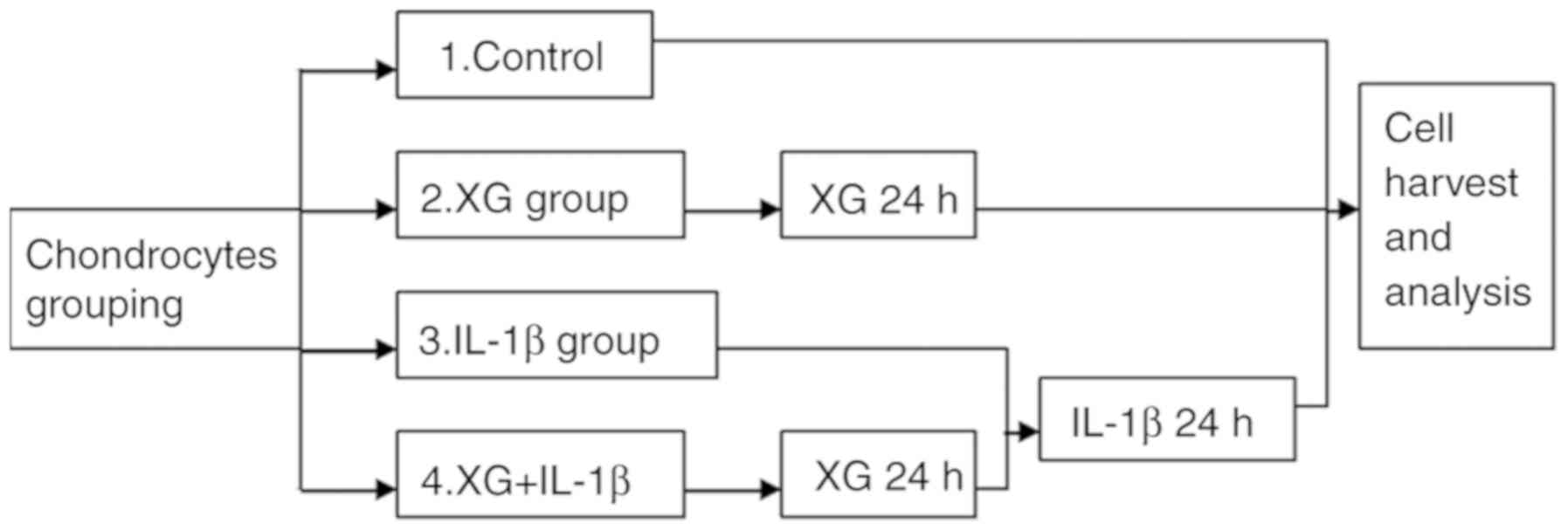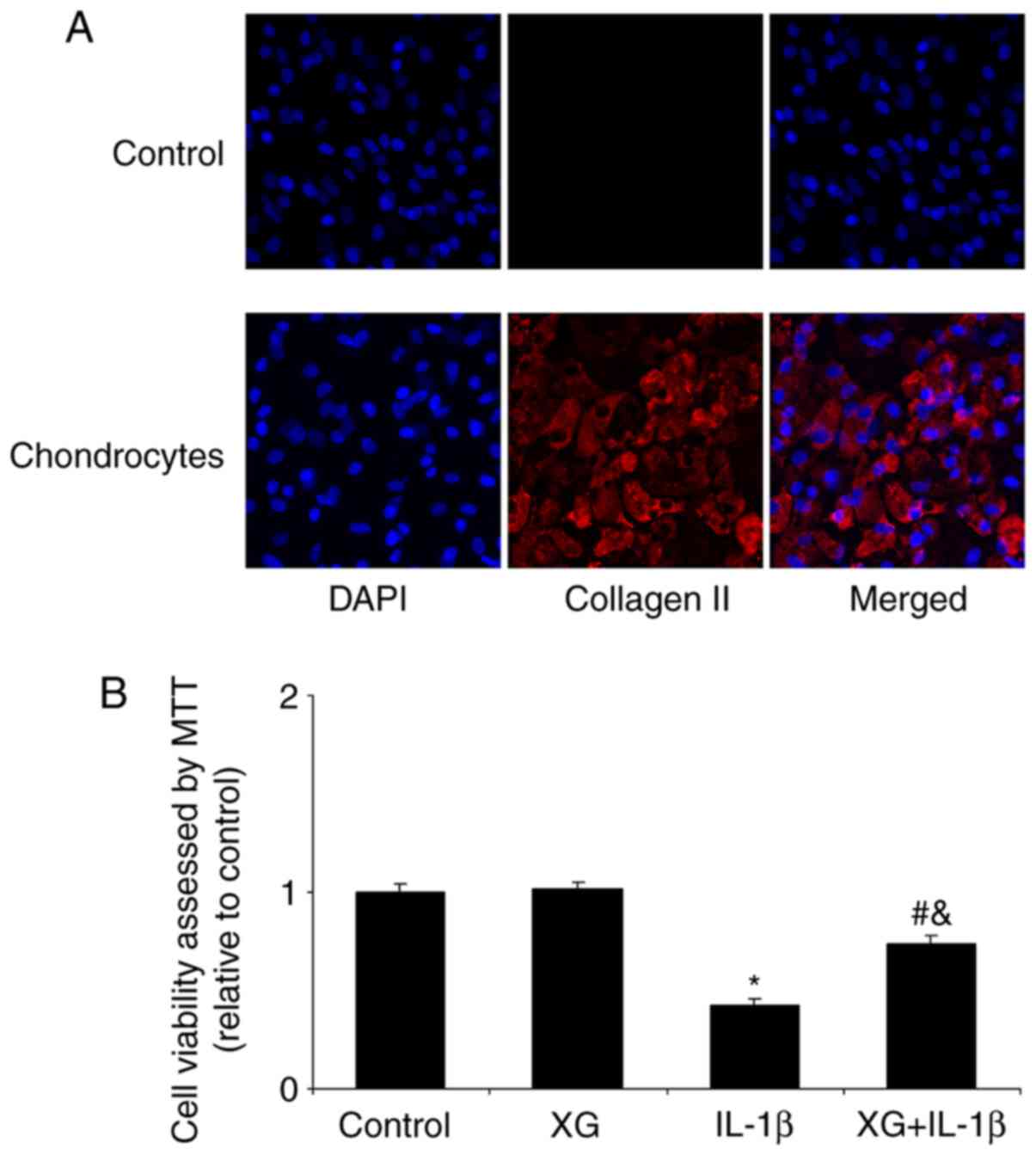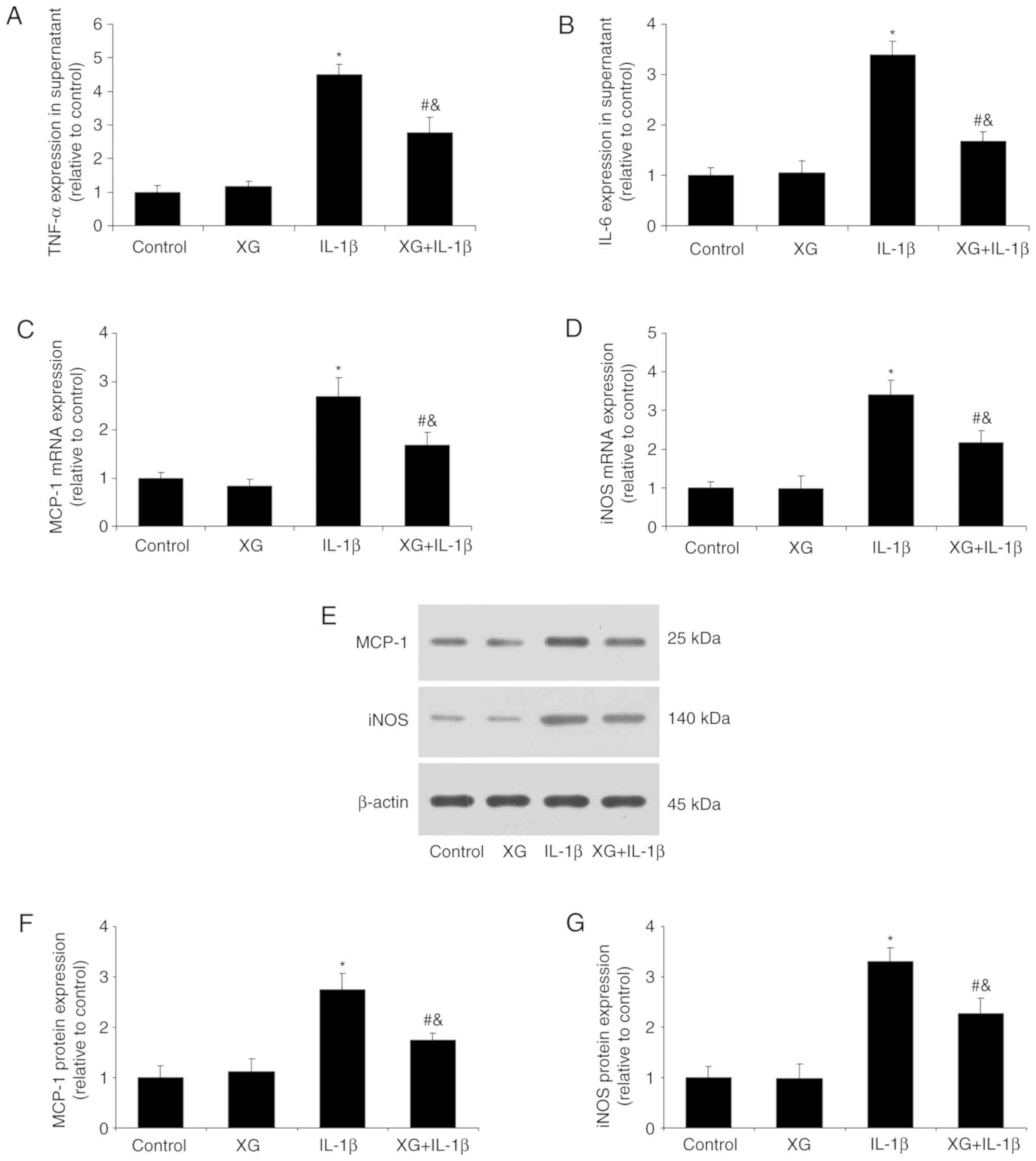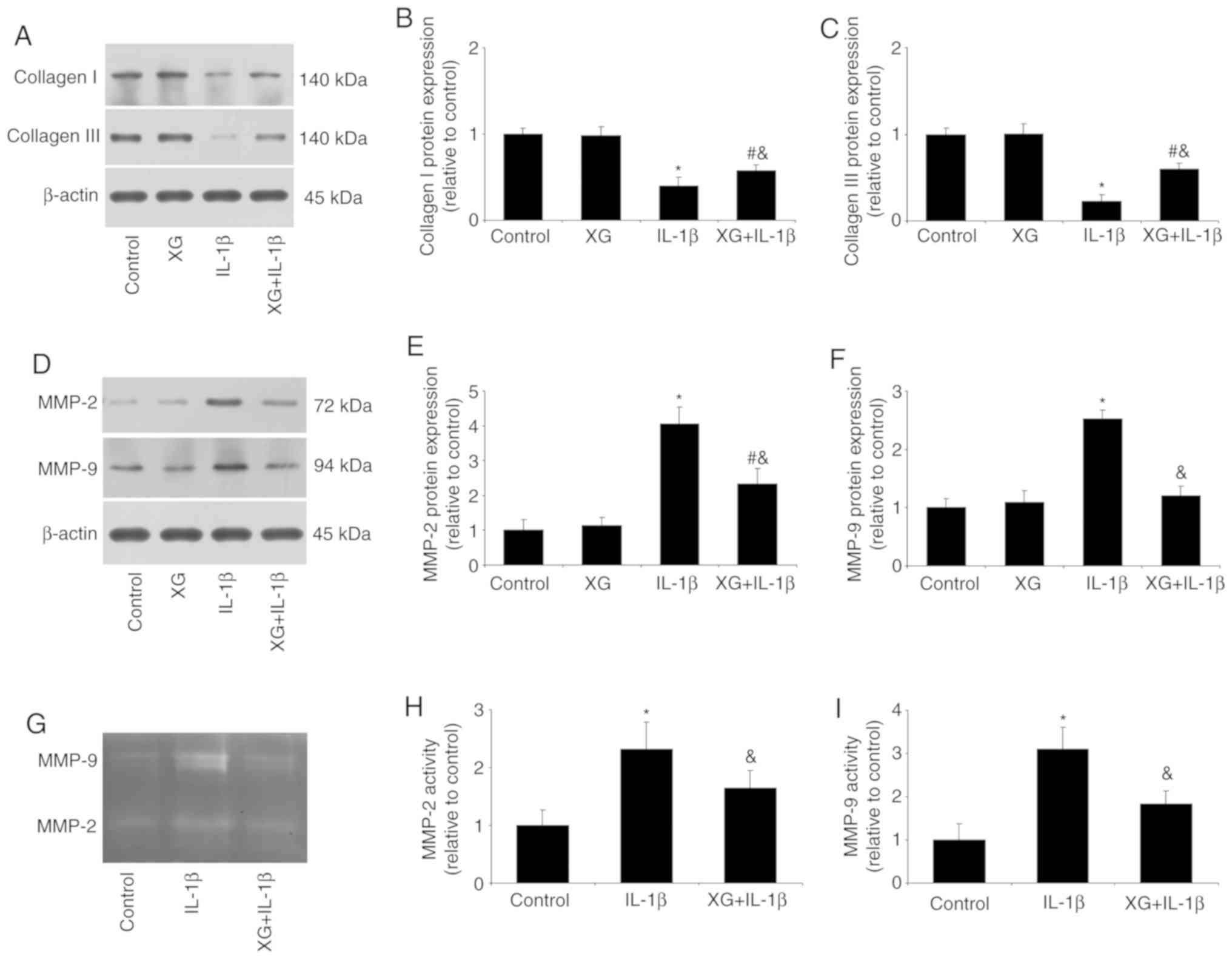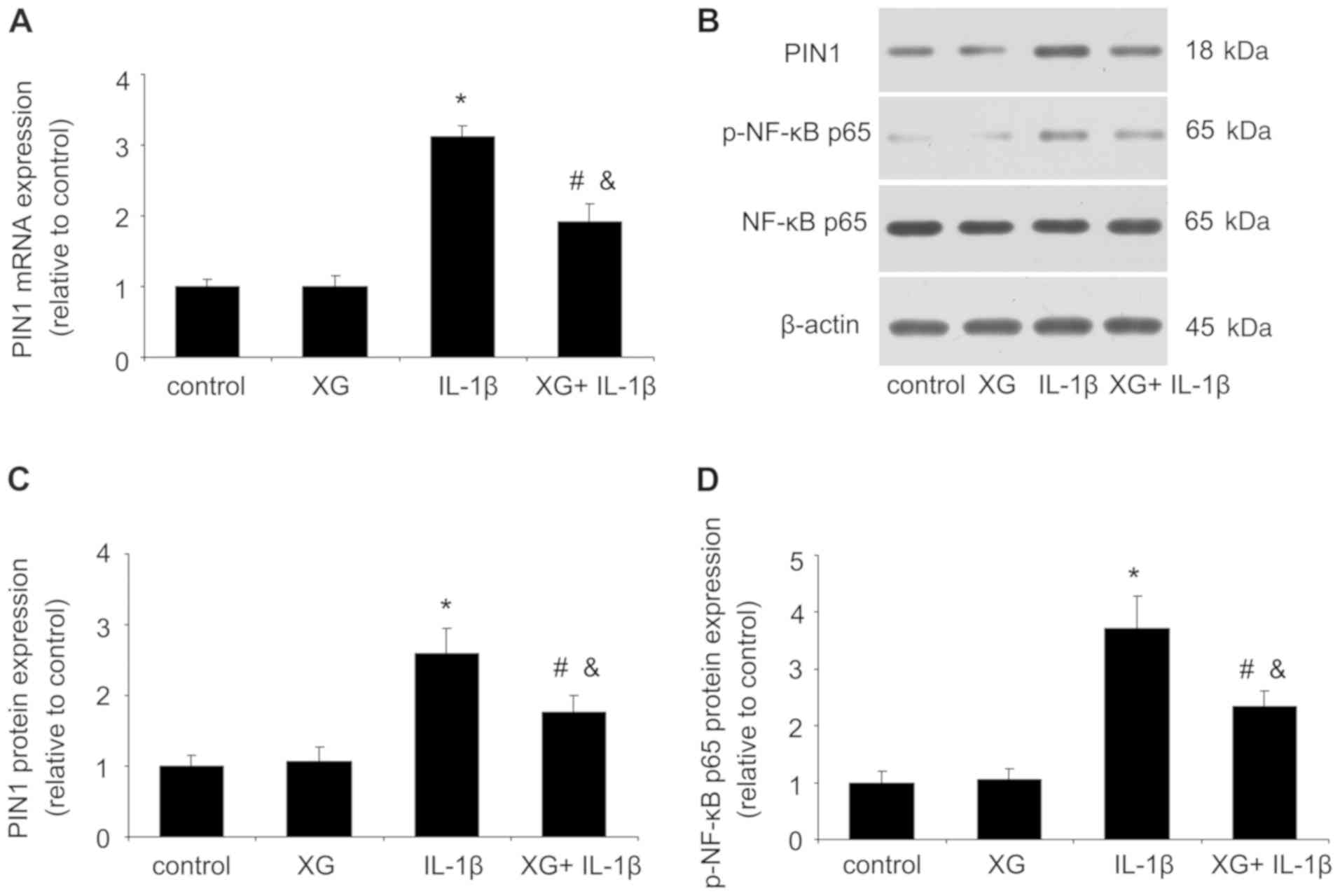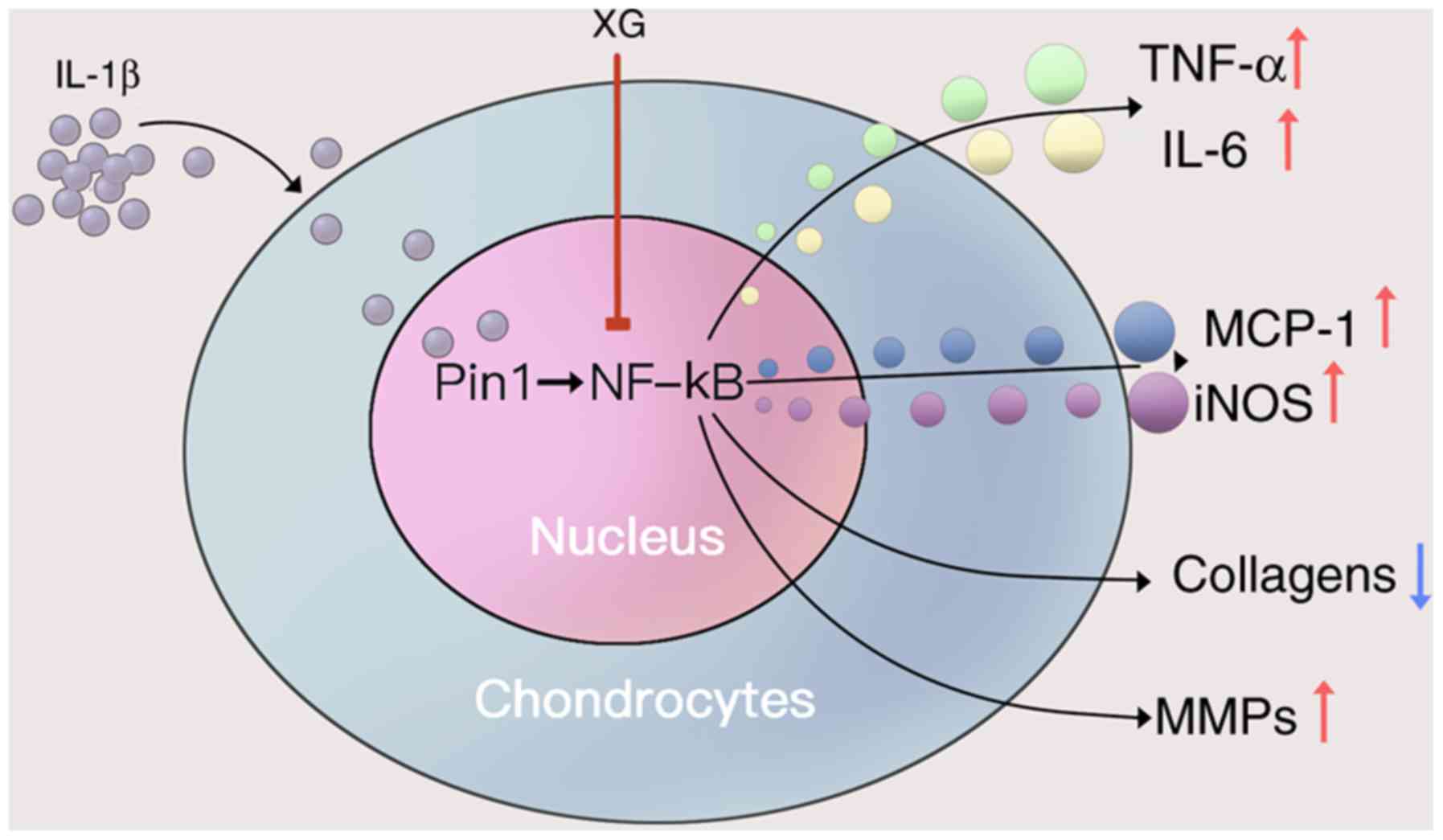|
1
|
Ying W, Yuan F, He P and Ji P: Inhibition
of Notch1 protects against IL-1β-induced inflammation and cartilage
destruction in temporomandibular chondrocytes. Mol Med Rep.
15:4391–4397. 2017. View Article : Google Scholar : PubMed/NCBI
|
|
2
|
Schiffman E, Ohrbach R, Truelove E, Look
J, Anderson G, Goulet JP, List T, Svensson P, Gonzalez Y, Lobbezoo
F, et al International RDC/TMD Consortium Network, International
association for Dental Research; Orofacial Pain Special Interest
Group, International Association for the Study of Pain, :
Diagnostic Criteria for Temporomandibular Disorders (DC/TMD) for
Clinical and Research Applications: recommendations of the
International RDC/TMD Consortium Network* and Orofacial Pain
Special Interest Group†. J Oral Facial Pain Headache. 28:6–27.
2014. View Article : Google Scholar : PubMed/NCBI
|
|
3
|
Wadhwa S and Kapila S: TMJ disorders:
Future innovations in diagnostics and therapeutics. J Dent Educ.
72:930–947. 2008. View Article : Google Scholar : PubMed/NCBI
|
|
4
|
Dahlström L and Carlsson GE:
Temporomandibular disorders and oral health-related quality of
life. A systematic review. Acta Odontol Scand. 68:80–85. 2010.
View Article : Google Scholar : PubMed/NCBI
|
|
5
|
Yamazaki Y, Ren K, Shimada M and Iwata K:
Modulation of paratrigeminal nociceptive neurons following
temporomandibular joint inflammation in rats. Exp Neurol.
214:209–218. 2008. View Article : Google Scholar : PubMed/NCBI
|
|
6
|
Slade GD, Conrad MS, Diatchenko L, Rashid
NU, Zhong S, Smith S, Rhodes J, Medvedev A, Makarov S, Maixner W,
et al: Cytokine biomarkers and chronic pain: Association of genes,
transcription, and circulating proteins with temporomandibular
disorders and widespread palpation tenderness. Pain. 152:2802–2812.
2011. View Article : Google Scholar : PubMed/NCBI
|
|
7
|
Parks WC, Wilson CL and López-Boado YS:
Matrix metalloproteinases as modulators of inflammation and innate
immunity. Nat Rev Immunol. 4:617–629. 2004. View Article : Google Scholar : PubMed/NCBI
|
|
8
|
Ji RR, Xu ZZ, Wang X and Lo EH: Matrix
metalloprotease regulation of neuropathic pain. Trends Pharmacol
Sci. 30:336–340. 2009. View Article : Google Scholar : PubMed/NCBI
|
|
9
|
Mizui T, Ishimaru J, Miyamoto K and Kurita
K: Matrix metalloproteinase-2 in synovial lavage fluid of patients
with disorders of the temporomandibular joint. Br J Oral Maxillofac
Surg. 39:310–314. 2001. View Article : Google Scholar : PubMed/NCBI
|
|
10
|
Kawasaki Y, Xu ZZ, Wang X, Park JY, Zhuang
ZY, Tan PH, Gao YJ, Roy K, Corfas G, Lo EH, et al: Distinct roles
of matrix metalloproteases in the early- and late-phase development
of neuropathic pain. Nat Med. 14:331–336. 2008. View Article : Google Scholar : PubMed/NCBI
|
|
11
|
Tun-Kyi A, Finn G, Greenwood A, Nowak M,
Lee TH, Asara JM, Tsokos GC, Fitzgerald K, Israel E, Li X, et al:
Essential role for the prolyl isomerase Pin1 in Toll-like receptor
signaling and type I interferon-mediated immunity. Nat Immunol.
12:733–741. 2011. View
Article : Google Scholar : PubMed/NCBI
|
|
12
|
Lu KP and Zhou XZ: The prolyl isomerase
PIN1: A pivotal new twist in phosphorylation signalling and
disease. Nat Rev Mol Cell Biol. 8:904–916. 2007. View Article : Google Scholar : PubMed/NCBI
|
|
13
|
Pastorino L, Sun A, Lu PJ, Zhou XZ,
Balastik M, Finn G, Wulf G, Lim J, Li SH, Li X, et al: The prolyl
isomerase Pin1 regulates amyloid precursor protein processing and
amyloid-beta production. Nature. 440:528–534. 2006. View Article : Google Scholar : PubMed/NCBI
|
|
14
|
Liu X, Liang E, Song X, Du Z, Zhang Y and
Zhao Y: Inhibition of Pin1 alleviates myocardial fibrosis and
dysfunction in STZ-induced diabetic mice. Biochem Biophys Res
Commun. 479:109–115. 2016. View Article : Google Scholar : PubMed/NCBI
|
|
15
|
Nakatsu Y, Sakoda H, Kushiyama A, Zhang J,
Ono H, Fujishiro M, Kikuchi T, Fukushima T, Yoneda M, Ohno H, et
al: Peptidyl-prolyl cis/trans isomerase NIMA-interacting 1
associates with insulin receptor substrate-1 and enhances insulin
actions and adipogenesis. J Biol Chem. 286:20812–20822. 2011.
View Article : Google Scholar : PubMed/NCBI
|
|
16
|
Costantino S, Paneni F, Lüscher TF and
Cosentino F: Pin1 inhibitor Juglone prevents diabetic vascular
dysfunction. Int J Cardiol. 203:702–707. 2016. View Article : Google Scholar : PubMed/NCBI
|
|
17
|
Liu M, Yu P, Jiang H, Yang X, Zhao J, Zou
Y and Ge J: The essential role of pin1 via nf-kappab signaling in
vascular inflammation and atherosclerosis in Apoe−/−
mice. Int J Mol Sci. 18:182017.
|
|
18
|
Zhang W, Wu J, Zhang F, Dou X, Ma A, Zhang
X, Shao H, Zhao S, Ling P, Liu F, et al: Lower range of molecular
weight of xanthan gum inhibits apoptosis of chondrocytes through
MAPK signaling pathways. Int J Biol Macromol. 130:79–87. 2019.
View Article : Google Scholar : PubMed/NCBI
|
|
19
|
Han G, Shao H, Zhu X, Wang G, Liu F, Wang
F, Ling P and Zhang T: The protective effect of xanthan gum on
interleukin-1β induced rabbit chondrocytes. Carbohydr Polym.
89:870–875. 2012. View Article : Google Scholar : PubMed/NCBI
|
|
20
|
Shao H, Han G, Ling P, Zhu X, Wang F, Zhao
L, Liu F, Liu X, Wang G, Ying Y, et al: Intra-articular injection
of xanthan gum reduces pain and cartilage damage in a rat
osteoarthritis model. Carbohydr Polym. 92:1850–1857. 2013.
View Article : Google Scholar : PubMed/NCBI
|
|
21
|
Shao X, Chen Q, Dou X, Chen L, Wu J, Zhang
W, Shao H, Ling P, Liu F and Wang F: Lower range of molecular
weight of xanthan gum inhibits cartilage matrix destruction via
intrinsic bax-mitochondria cytochrome c-caspase pathway. Carbohydr
Polym. 198:354–363. 2018. View Article : Google Scholar : PubMed/NCBI
|
|
22
|
Li J, Han G, Ma M, Wei G, Shi X, Guo Z, Li
T, Meng H, Cao Y and Liu X: Xanthan gum ameliorates osteoarthritis
and mitigates cartilage degradation via regulation of the
wnt3a/β-catenin signaling pathway. Med Sci Monit. 25:7488–7498.
2019. View Article : Google Scholar : PubMed/NCBI
|
|
23
|
Pastrana JL, Sha X, Virtue A, Mai J, Cueto
R, Lee IA, Wang H and Yang XF: Regulatory t cells and
atherosclerosis. J Clin Exp Cardiolog. 2012 (Suppl
12):22012.PubMed/NCBI
|
|
24
|
Livak KJ and Schmittgen TD: Analysis of
relative gene expression data using real-time quantitative PCR and
the 2(−Δ Δ C(T)) Method. Methods. 25:402–408. 2001. View Article : Google Scholar : PubMed/NCBI
|
|
25
|
Liang ES, Bai WW, Wang H, Zhang JN, Zhang
F, Ma Y, Jiang F, Yin M, Zhang MX, Chen XM, et al: PARP-1
(Poly[ADP-Ribose] Polymerase 1) Inhibition Protects From Ang II
(Angiotensin II)-Induced Abdominal Aortic Aneurysm in Mice.
Hypertension. 72:1189–1199. 2018. View Article : Google Scholar : PubMed/NCBI
|
|
26
|
Kou XX, Wu YW, Ding Y, Hao T, Bi RY, Gan
YH and Ma X: 17β-estradiol aggravates temporomandibular joint
inflammation through the NF-κB pathway in ovariectomized rats.
Arthritis Rheum. 63:1888–1897. 2011. View Article : Google Scholar : PubMed/NCBI
|
|
27
|
Türp JC and Schindler HJ: Chronic
temporomandibular disorders. Schmerz. 18:109–117. 2004.(In German).
View Article : Google Scholar : PubMed/NCBI
|
|
28
|
García-Ochoa F, Santos VE, Casas JA and
Gómez E: Xanthan gum: Production, recovery, and properties.
Biotechnol Adv. 18:549–579. 2000. View Article : Google Scholar : PubMed/NCBI
|
|
29
|
Wojdasiewicz P, Poniatowski LA and
Szukiewicz D: The role of inflammatory and anti-inflammatory
cytokines in the pathogenesis of osteoarthritis. Mediators Inflamm.
2014:5614592014. View Article : Google Scholar : PubMed/NCBI
|
|
30
|
Evavold CL, Ruan J, Tan Y, Xia S, Wu H and
Kagan JC: The pore-forming protein gasdermin D regulates
interleukin-1 secretion from living macrophages. Immunity.
48:35–44.e6. 2018. View Article : Google Scholar : PubMed/NCBI
|
|
31
|
Li J, Long X, Ke J, Meng QG, Lee WC,
Doocey JM and Zhu F: Regulation of HAS expression in human synovial
lining cells of TMJ by IL-1beta. Arch Oral Biol. 53:60–65. 2008.
View Article : Google Scholar : PubMed/NCBI
|
|
32
|
Kristensen KD, Alstergren P, Stoustrup P,
Küseler A, Herlin T and Pedersen TK: Cytokines in healthy
temporomandibular joint synovial fluid. J Oral Rehabil. 41:250–256.
2014. View Article : Google Scholar : PubMed/NCBI
|
|
33
|
Marks PH and Donaldson ML: Inflammatory
cytokine profiles associated with chondral damage in the anterior
cruciate ligament-deficient knee. Arthroscopy. 21:1342–1347. 2005.
View Article : Google Scholar : PubMed/NCBI
|
|
34
|
Dai SM, Shan ZZ, Nakamura H, Masuko-Hongo
K, Kato T, Nishioka K and Yudoh K: Catabolic stress induces
features of chondrocyte senescence through overexpression of
caveolin 1: Possible involvement of caveolin 1-induced
down-regulation of articular chondrocytes in the pathogenesis of
osteoarthritis. Arthritis Rheum. 54:818–831. 2006. View Article : Google Scholar : PubMed/NCBI
|
|
35
|
Nascimento GC, Rizzi E, Gerlach RF and
Leite-Panissi CR: Expression of MMP-2 and MMP-9 in the rat
trigeminal ganglion during the development of temporomandibular
joint inflammation. Braz J Med Biol Res. 46:956–967. 2013.
View Article : Google Scholar : PubMed/NCBI
|
|
36
|
Fischer G, Bang H and Mech C:
Determination of enzymatic catalysis for the
cis-trans-isomerization of peptide binding in
proline-containing peptides. Biomed Biochim Acta. 43:1101–1111.
1984.(In German). PubMed/NCBI
|
|
37
|
Hanes SD: Prolyl isomerases in gene
transcription. Biochim Biophys Acta. 1850:2017–2034. 2015.
View Article : Google Scholar : PubMed/NCBI
|
|
38
|
Yang JW, Hien TT, Lim SC, Jun DW, Choi HS,
Yoon JH, Cho IJ and Kang KW: Pin1 induction in the fibrotic liver
and its roles in TGF-β1 expression and Smad2/3 phosphorylation. J
Hepatol. 60:1235–1241. 2014. View Article : Google Scholar : PubMed/NCBI
|
|
39
|
Liang ES, Cheng W, Yang RX, Bai WW, Liu X
and Zhao YX: Peptidyl-prolyl isomerase Pin1 deficiency attenuates
angiotensin II-induced abdominal aortic aneurysm formation in
ApoE−/− mice. J Mol Cell Cardiol. 114:334–344. 2018.
View Article : Google Scholar : PubMed/NCBI
|
|
40
|
Atkinson GP, Nozell SE, Harrison DK,
Stonecypher MS, Chen D and Benveniste EN: The prolyl isomerase Pin1
regulates the NF-kappaB signaling pathway and interleukin-8
expression in glioblastoma. Oncogene. 28:3735–3745. 2009.
View Article : Google Scholar : PubMed/NCBI
|
|
41
|
Qin WD, Wei SJ, Wang XP, Wang J, Wang WK,
Liu F, Gong L, Yan F, Zhang Y and Zhang M: Poly(ADP-ribose)
polymerase 1 inhibition protects against low shear stress induced
inflammation. Biochim Biophys Acta. 1833:59–68. 2013. View Article : Google Scholar : PubMed/NCBI
|
|
42
|
Barnes PJ and Karin M: Nuclear
factor-kappaB: A pivotal transcription factor in chronic
inflammatory diseases. N Engl J Med. 336:1066–1071. 1997.
View Article : Google Scholar : PubMed/NCBI
|
|
43
|
Li Q and Verma IM: NF-kappaB regulation in
the immune system. Nat Rev Immunol. 2:725–734. 2002. View Article : Google Scholar : PubMed/NCBI
|
|
44
|
Song N, Kim AJ, Kim HJ, Jee HJ, Kim M, Yoo
YH and Yun J: Melatonin suppresses doxorubicin-induced premature
senescence of A549 lung cancer cells by ameliorating mitochondrial
dysfunction. J Pineal Res. 53:335–343. 2012. View Article : Google Scholar : PubMed/NCBI
|
|
45
|
Wu S, Li H, Yu L, Wang N, Li X and Chen W:
IL-1β upregulates Muc5ac expression via NF-κB-induced HIF-1α in
asthma. Immunol Lett. 192:20–26. 2017. View Article : Google Scholar : PubMed/NCBI
|
|
46
|
Hu MM, Yang Q, Zhang J, Liu SM, Zhang Y,
Lin H, Huang ZF, Wang YY, Zhang XD, Zhong B, et al: TRIM38 inhibits
TNFα- and IL-1β-triggered NF-κB activation by mediating
lysosome-dependent degradation of TAB2/3. Proc Natl Acad Sci USA.
111:1509–1514. 2014. View Article : Google Scholar : PubMed/NCBI
|















